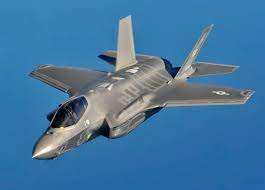F-35 Crash in South Carolina Sparks Urgent Concerns

In a startling turn of events, the pilot of the ill-fated F-35 jet that crashed in South Carolina made a desperate plea for assistance during a harrowing phone call. This incident has raised questions about the future of the F-35 Lightning II stealth fighter program, as the pilot ejected and landed in a resident’s backyard in North Charleston, triggering a frantic emergency response.
The Distress Call
Emerging details from a four-minute phone call made by the military pilot to an emergency dispatcher reveal the urgency of the situation. The pilot, grappling with his predicament, was pleading for immediate medical assistance. The resident of the home in North Charleston, initially shocked by the unexpected arrival, urgently informed the dispatcher: “We have a pilot in the house, and it appears he has landed in my backyard. We desperately need an ambulance.”
The pilot then took over the call, stating, “Ma’am, a military jet has crashed. I am the pilot. We urgently require rescue services. I am uncertain about the aircraft’s location; it must have crash-landed somewhere. I had to eject.”
A Costly Conundrum
This dramatic incident coincides with the release of a 96-page report by a federal accountability office, which strongly recommends that the Department of Defense and the military services reconsider their future strategy for sustaining the F-35 aircraft model. The report raises serious concerns, especially considering the proposed expenditure of a staggering $1.7 trillion on 2,500 F-35 Lightning II stealth fighter jets.
The Missing Aircraft
Over the weekend, a military aircraft valued at $100 million went missing, flying unmanned for 60 miles before crashing north of Joint Base Charleston in South Carolina. Debris from the jet was discovered in Indiantown, South Carolina, approximately 80 miles north of the base. The incident occurred due to a malfunction that led the pilot to eject from the aircraft, ultimately landing in a residential backyard roughly 1 mile north of Charleston International Airport on Sunday.
Unanswered Questions
The mysterious circumstances surrounding the disappearance and crash of this “most expensive” aircraft have left many baffled. The U.S. Marine Corps has been tight-lipped, revealing minimal information about the incident. What caused the jet to go uncontrolled remains unclear. It is worth noting that the aircraft was flying at an altitude of about 1,000 feet and is equipped with flight control software that may offer insights into its unexpected behavior, as reported by the Associated Press.
In response to the unfolding situation, the Marine Corps stated, “This technology is designed to save our pilots in case they become incapacitated or lose situational awareness.” An investigation is currently underway to shed light on the circumstances surrounding this alarming event.
Cost Concerns Loom
The F-35 aircraft involved in the South Carolina crash is just one of approximately 450 owned by the Department of Defense, as outlined in the report. The Government Accountability Office has voiced several apprehensions, particularly regarding the maintenance costs associated with this aircraft model. Of the colossal $1.7 trillion earmarked for the F-35 program, a staggering $1.3 trillion is designated for operating and sustaining these high-tech jets.
In the wake of this incident, it is evident that a thorough reassessment of the F-35 program is not only prudent but essential. The safety of our pilots and the effective allocation of resources demand immediate attention as we navigate the uncertain skies ahead





